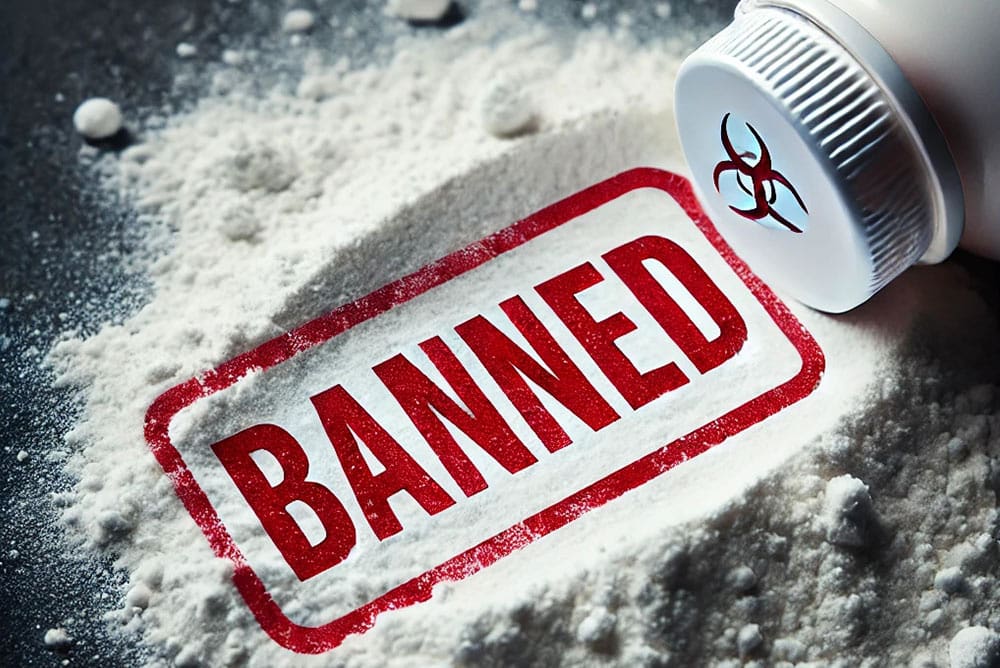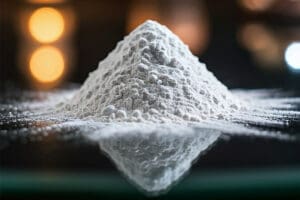Key Takeaways
- Talc, a common ingredient in personal care products, may be contaminated with asbestos, a known carcinogen.
- Studies suggest a potential connection between talcum powder use and ovarian cancer, lung cancer, and mesothelioma.
- Major lawsuits have led to billion-dollar verdicts, product recalls, and a shift toward talc-free alternatives.
- While the FDA has not banned talc, other countries have imposed stricter regulations and warnings.
Talcum powder has been a household staple for generations, used to keep skin dry and reduce friction. But behind its everyday use lies a serious health concern—one that has led to legal battles, product recalls, and growing fears about its safety.
Studies and lawsuits have linked talcum powder to ovarian cancer and mesothelioma, raising urgent questions about whether these products are truly safe. As more evidence comes to light, manufacturers and regulators have been forced to take action, leading to bans and reformulations worldwide.
What Is Talcum Powder?
Talcum powder is made from talc, a naturally occurring mineral that absorbs moisture and prevents chafing. It’s long been used in baby powder, body powders, and cosmetics. However, natural talc deposits can sometimes contain asbestos—a deadly carcinogen known to cause lung cancer and mesothelioma. This contamination risk is at the heart of the controversy surrounding talcum powder.
Talcum powder manufacturers, particularly Johnson & Johnson, have faced thousands of lawsuits from individuals who developed cancer after years of using these products.
Health Concerns: The Cancer Link
For years, individuals and medical experts have raised concerns about the potential dangers of talcum powder.
- 1971 study: A British study found talc particles embedded in ovarian tumors, raising initial concerns about its carcinogenic effects.
- 1982 epidemiological study: This study found that women who used talcum powder in the genital area had a 92% increased risk of ovarian cancer.
- 2016 research in epidemiology journal: This study found a 33% higher risk of ovarian cancer among women who used talc-based powders regularly.
- 2019 FDA testing: The FDA found traces of asbestos in certain samples of talcum powder products, leading to voluntary product recalls.
Research has suggested links between long-term talc use and serious health risks, including:
- Ovarian cancer: Some studies indicate that talc particles used in the genital area can travel to the ovaries, causing inflammation and increasing cancer risk.
- Mesothelioma: Asbestos-contaminated talc, when inhaled, can lead to mesothelioma, a rare and aggressive cancer affecting the lungs.
- Lung cancer and other illnesses: Industrial workers exposed to airborne talc particles over time may also face elevated health risks, including lung diseases and other illnesses.
While some studies have found a strong link between talc use and cancer, others claim there isn’t enough definitive proof. But for thousands of people battling these illnesses, the potential risks feel all too real.
75% of active talc claimants voted to approve J&J’s bankruptcy proposal. It sets aside $6.5 billion to settle claims.
Legal Battles and Industry Changes
Talcum powder manufacturers, particularly Johnson & Johnson, have faced thousands of lawsuits from individuals who developed cancer after years of using these products. Some key legal milestones include:
- 2018 Missouri jury verdict: Johnson & Johnson was ordered to pay $4.7 billion to 22 women diagnosed with ovarian cancer.
- 2019 New Jersey verdict: A jury awarded $750 million to four individuals who developed mesothelioma.
- 2021 California verdict: Plaintiff claimed that her long-term J&J talcum powder use led to her mesothelioma diagnosis. A California jury eventually awarded her $26.5 million and an additional $100,000 million in punitive damages.
- Tentative 2024 agreement: Johnson & Johnson agreed to pay ~ $700 million to settle claims in over 40 states that allege it wrongfully marketed its talc-based baby powder products by not disclosing their potential health risks.
- Johnson & Johnson payout plan approved (2024): In a historic development, 75% of active talc claimants voted to approve J&J’s bankruptcy proposal. It sets aside $6.5 billion to settle claims.
These lawsuits, along with consumer pressure, have led many manufacturers to remove talc from their products and switch to safer alternatives like cornstarch.
Regulatory Actions and Bans
While the U.S. Food and Drug Administration (FDA) and Centers for Disease Control (CDC) has not officially banned talcum powder, the FDA has increased testing and oversight. Other countries have taken even stronger actions.
- United States: In 2020, Johnson & Johnson agreed to remove talc-based baby powder products from store shelves.
- Canada: Classified talc as a potentially harmful substance in 2021, leading to stricter labeling requirements.
- European Union: Enforced strict asbestos-free requirements for all talc-containing products.
- Other countries: Several nations in Asia and South America have added warnings or restricted talc use in cosmetics and personal care items.
With increasing global awareness, regulatory bodies continue to monitor and tighten restrictions on talc-based products.
What Does It Mean for You?
The growing concerns and legal actions have led to a significant shift in the personal care industry. Many brands have reformulated their products, and consumers are choosing talc-free alternatives.
If you or a loved one has been diagnosed with ovarian cancer or mesothelioma after using talcum powder, you may have legal options. Seeking justice can help hold corporations accountable for the harm caused and ensure that no one else suffers from preventable exposure.
The debate over talcum powder’s safety continues, but one thing is clear: consumers deserve transparency and protection. If you’ve been affected, you’re not alone. Seeking support and exploring legal options may help you find the answers and justice you deserve. Join the Many to protect yourself and future generations.
Frequently Asked Questions
Talcum powder was banned due to concerns about asbestos contamination, which can cause lung disease and cancer. Lawsuits linked its use to ovarian cancer and mesothelioma, leading to bans and recalls.
Not all talcum powders are banned, but many containing asbestos-traced talc were removed from the market. Some companies have replaced talc with cornstarch-based alternatives.
Talcum powder has been linked to ovarian cancer, lung issues, and mesothelioma due to potential asbestos contamination. Studies and lawsuits have fueled safety concerns.
Johnson & Johnson discontinued talc-based baby powder globally, replacing it with cornstarch-based alternatives due to lawsuits and declining sales.
Safe alternatives include cornstarch, arrowroot powder, baking soda, and oat flour. These natural powders provide moisture absorption without the health risks associated with talc.




